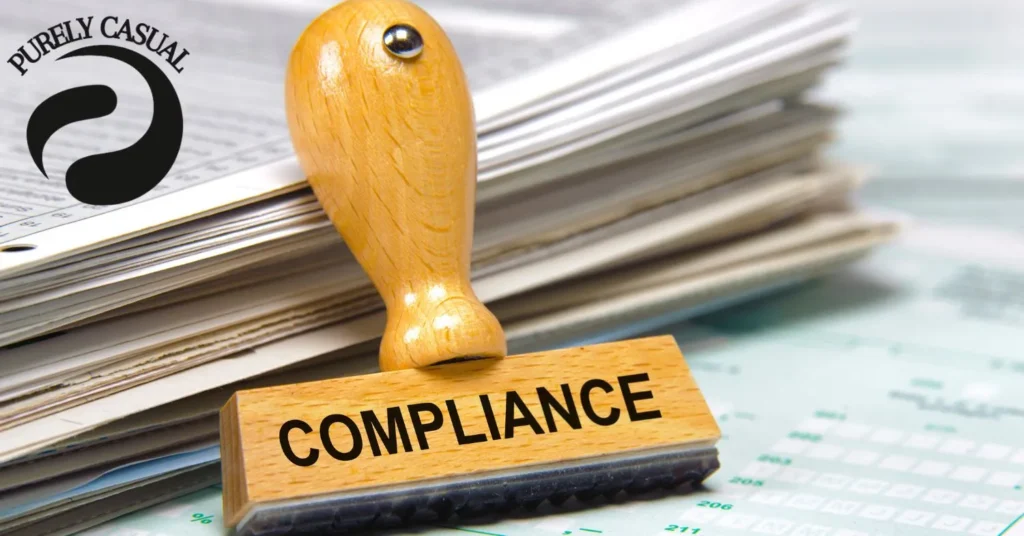AB 802 is a California law that requires large building owners to report their energy and water use. It applies to commercial and multi-family buildings 50,000 square feet or larger. The goal of the law is to help the state track and reduce energy and water consumption.
This law aims to create a more energy-efficient California. By collecting and reporting data, building owners can better understand their usage. This allows them to make informed decisions to save energy, water, and money.
AB 802 compliance is not just a legal requirement; it offers many benefits. Owners can save on utility costs by identifying ways to reduce energy and water use. It also helps in improving building performance, which can increase property value.
The California Energy Commission oversees this law. Building owners must submit their energy and water use data through the ENERGY STAR Portfolio Manager. This online tool helps track and manage data in a simple and organized way.
Failing to meet AB 802 standards can lead to penalties and fines. On the other hand, staying compliant ensures that your property meets state standards. This can also make your building more attractive to environmentally conscious tenants.
This blog will guide you through the AB 802 compliance process. You will learn about the reporting requirements, how to gather data, and tips to make the process easier. Whether you are a property manager or building owner, understanding AB 802 is essential for operating in California.
Table Of Contents
What is AB 802 and Why Does It Matter?
Overview of AB 802
AB 802 is a California law that focuses on energy and water usage in large buildings. It requires owners of commercial and multi-family buildings 50,000 square feet or larger to report their energy and water data. This helps the state monitor and reduce resource consumption across all sectors.
The law covers both existing and newly constructed buildings. The purpose is to create transparency in energy and water use. Building owners can use the information to improve efficiency and cut costs.
Why Was AB 802 Created?
California introduced AB 802 to combat climate change and improve energy efficiency. The state aims to lower greenhouse gas emissions by reducing energy and water consumption. This law plays a key role in helping California achieve its sustainability goals.
This law also benefits property owners. By tracking energy and water use, owners can identify areas for improvement. This can lead to significant savings on utility bills and a smaller environmental footprint.
Who Needs to Comply?
AB 802 applies to large commercial and multi-family buildings. These buildings must be 50,000 square feet or larger to be covered under the law. Owners of smaller buildings are not required to report.
Building owners and property managers are responsible for compliance. They need to track energy and water data and submit it annually. Failure to comply can result in penalties and fines.
Key Deadlines and Reporting Requirements
Building owners must submit their energy and water usage reports once a year. The deadline is set by the California Energy Commission and must be met annually. Reports are submitted using the ENERGY STAR Portfolio Manager, an online tool provided by the U.S. Environmental Protection Agency.
The data must include both energy and water usage for the entire building. This includes energy from all utilities such as electricity, gas, and water. Accurate reporting is essential for meeting the state’s standards.
The Compliance Process: A Step-by-Step Guide
Step 1: Understand Your Reporting Requirements
The first step is to check if your building qualifies for reporting requirements. If your building is 50,000 square feet or larger, you are required to report. This includes both commercial properties and multi-family residential buildings.
You will need to collect data on your building’s energy and water use. This includes energy from electricity, natural gas, and water from all utility providers. It’s important to gather this data for the entire building, not just individual units.
Step 2: Collecting Energy and Water Data
To meet the reporting requirements, you must track energy and water usage for your entire property. You can gather this information directly from utility bills or online portals. Some utilities provide tools to help you access this data easily.
Using an online tool like the ENERGY STAR Portfolio Manager can simplify the process. This platform allows you to track and organize energy and water data in one place. It also provides useful metrics to help you understand your building’s performance.
Step 3: Submitting Your Energy Benchmarking Report
Once you have collected all the necessary data, you will need to submit it. Reports are filed using the ENERGY STAR Portfolio Manager, which sends the data to the California Energy Commission. The report must be submitted by the deadline set by the state each year.
Before submitting, double-check that all the data is accurate. The system will guide you through the submission process. Once submitted, the state will review your report for compliance.
Step 4: Annual Compliance and Updates
Meeting the requirements is not a one-time task. Each year, you’ll need to gather new data and submit an updated report. This ensures that your building stays in compliance with California’s energy and water goals.
It’s helpful to set a reminder or mark the submission deadline in your calendar. This way, you can stay on track and avoid penalties. Keeping organized records throughout the year will make the reporting process easier.
Step 5: Ongoing Monitoring and Improvement
After submitting your report, consider reviewing the results. The ENERGY STAR Portfolio Manager provides insights into your building’s energy performance. You can use this information to find areas where you can save energy and water.
Making small improvements each year can help lower your operating costs. You may even qualify for incentives or rebates for energy efficiency upgrades. Monitoring your usage will also help you stay prepared for future reports.
Benefits of Complying with AB 802
Energy and Water Savings
Meeting the reporting requirements helps building owners save energy and water. By tracking usage, you can identify areas where consumption is high. This allows you to implement changes that reduce utility costs.
Energy-efficient buildings use less electricity and gas. This not only lowers bills but also extends the life of your equipment. Water savings can be achieved through efficient fixtures and monitoring for leaks.
Increased Property Value
Energy-efficient buildings are more attractive to tenants and buyers. Meeting AB 802 standards can improve your building’s Energy Star rating. A higher rating can increase the market value of your property.
Tenants are often willing to pay more for buildings that are environmentally friendly. This can lead to higher occupancy rates and rental income. Energy efficiency is a selling point in the competitive real estate market.
Environmental Impact
Reducing energy and water use lowers your building’s carbon footprint. This contributes to the fight against climate change. Meeting AB 802 standards aligns your property with California’s sustainability goals.
By using less energy, you help decrease the demand on power plants. This reduces greenhouse gas emissions. Water conservation also protects natural resources and supports ecosystem health.
Avoiding Penalties
Failure to meet the reporting requirements can result in fines. Staying compliant ensures you avoid these unnecessary costs. It also keeps your property in good standing with state regulations.
Penalties can be both financial and legal. Non-compliance may damage your reputation as a property owner. It’s easier and more cost-effective to meet the requirements on time.
Access to Incentives and Rebates
Meeting the reporting requirements may qualify your building for incentives and rebates. These programs can help offset the cost of energy-efficient upgrades. California offers various financial benefits for sustainable practices.
Incentives can include tax credits, grants, or low-interest loans. Taking advantage of these can improve your return on investment. This makes compliance not just a legal obligation but a financial opportunity.
Overcoming Challenges: Common Barriers and Solutions
Initial Costs for Upgrading Systems
Upgrading to energy-efficient systems can seem expensive at first. Many property owners worry about the cost of new equipment and technology. However, these investments can save money in the long run by lowering utility bills.
There are financial incentives available to help cover these costs. California offers rebates and tax credits for energy efficiency improvements. Property owners can also explore low-interest financing options for upgrades.
Data Collection Challenges
Collecting accurate data on energy and water use can be challenging. Some building owners may not know how to track this information. Utility bills can be confusing, and manually gathering data can be time-consuming.
Using tools like the ENERGY STAR Portfolio Manager can simplify this process. The platform collects data automatically from your utility providers. This ensures your information is accurate and reduces the time spent on reporting.
Managing Time and Resources
Property owners often have limited time to manage reporting requirements. Gathering data, filing reports, and keeping up with regulations can be overwhelming. This is especially true for owners with multiple properties.
One solution is to delegate the work to a third-party consultant. Many energy experts specialize in helping building owners meet reporting requirements. Hiring a consultant can save time and ensure that all reports are filed correctly.
Tenant Cooperation
Sometimes tenants may be unaware of their role in reducing energy and water use. Their behaviors can impact the building’s overall efficiency. Engaging tenants is key to meeting your goals.
Property owners can educate tenants on the importance of energy conservation. Simple actions like turning off lights and fixing leaks can make a big difference. Creating a green culture in the building benefits everyone.
Staying Organized for Annual Reporting
Meeting the requirements requires annual submissions. It’s easy to fall behind if you don’t keep track of deadlines. Property owners need a reliable system to ensure they stay on top of yearly reporting.
Setting reminders and keeping detailed records throughout the year helps avoid last-minute stress. Consider using digital tools or working with a consultant to keep the process smooth. Staying organized will make compliance much easier year after year.
Conclusion
Meeting AB 802 requirements is essential for large building owners in California. By understanding and following the reporting guidelines, you ensure your property meets state regulations while benefiting from energy and water savings. Staying compliant not only helps the environment but also enhances your property’s value and avoids penalties.
Implementing efficient tracking systems, seeking expert advice, and utilizing financial incentives are all effective strategies. Engaging tenants in conservation efforts and maintaining organization throughout the year will further streamline the process. With these practices, meeting AB 802 standards becomes a manageable and advantageous part of property management.
FAQs
What is AB 802?
AB 802 is a California law that requires owners of large commercial and multi-family buildings to report their energy and water usage annually.
Who needs to comply with AB 802?
Buildings that are 50,000 square feet or larger are required to comply with AB 802. This includes both commercial properties and multi-family residential buildings.
How do I report energy and water usage?
You need to use the ENERGY STAR Portfolio Manager to report your energy and water usage. This tool helps you track and submit your data to the California Energy Commission.
What are the benefits of complying with AB 802?
Meeting AB 802 standards can lead to reduced utility costs, increased property value, and improved environmental impact. It also helps avoid fines and penalties for non-compliance.
What challenges might I face with AB 802 compliance?
Common challenges include the initial cost of upgrading systems, collecting accurate data, and managing time and resources. Working with experts and using data tracking tools can help overcome these obstacles.
Are there financial incentives available for energy efficiency upgrades?
Yes, there are various financial programs, including rebates and tax incentives, that can help offset the cost of making energy-efficient upgrades to your building.
How often do I need to report my data?
You must report your energy and water usage data annually. Be sure to meet the deadlines set by the California Energy Commission to remain in compliance.







